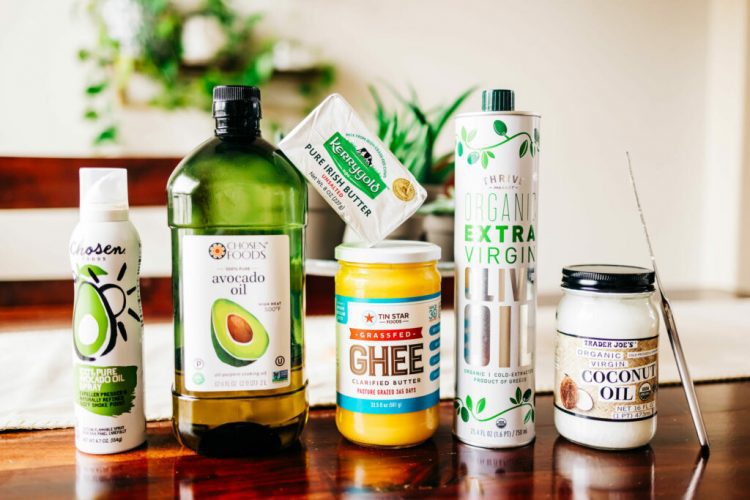Want to know which oils are best for cooking? You’ll find out here, along with some basic oil-cooking tips.
Hey friends! We’ve in California for one more day and enjoying some adventures – I’ll be back soon with a recap! In the meantime, I wanted to share this post after a question I received last week. I asked Mia to help with this post and we’re chatting alllllllll about cooking oils: which ones we tend to avoid, and our go-to oils.
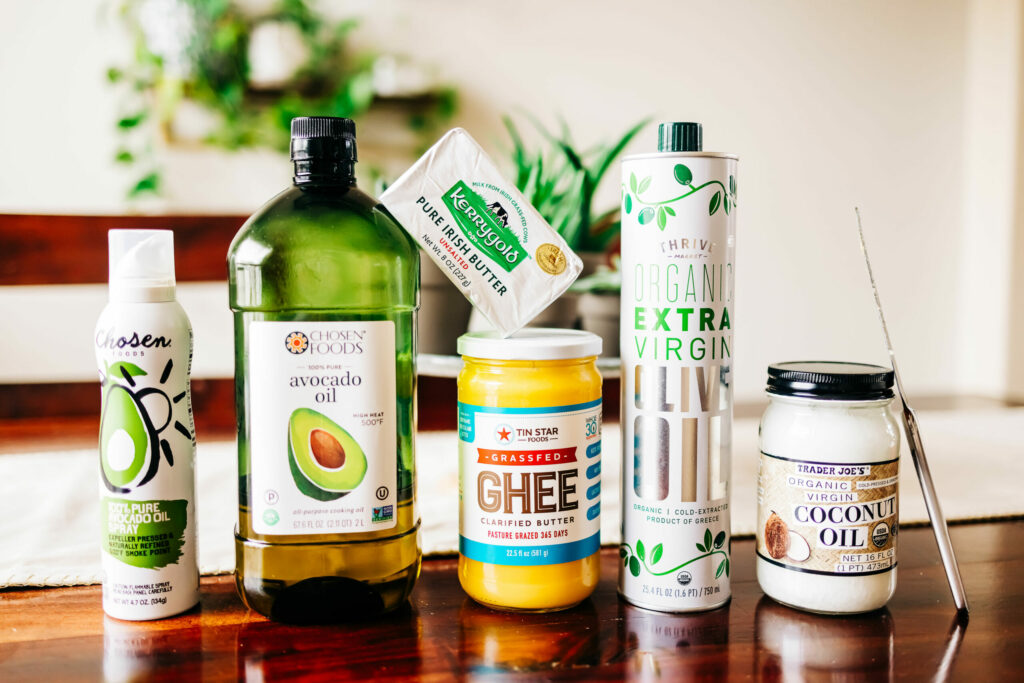
The best (and worst) cooking oils
There are SO many different types of cooking oils on the shelves, and it can be confusing to decide which one is the best choice for health, taste, and also for what you’re cooking.
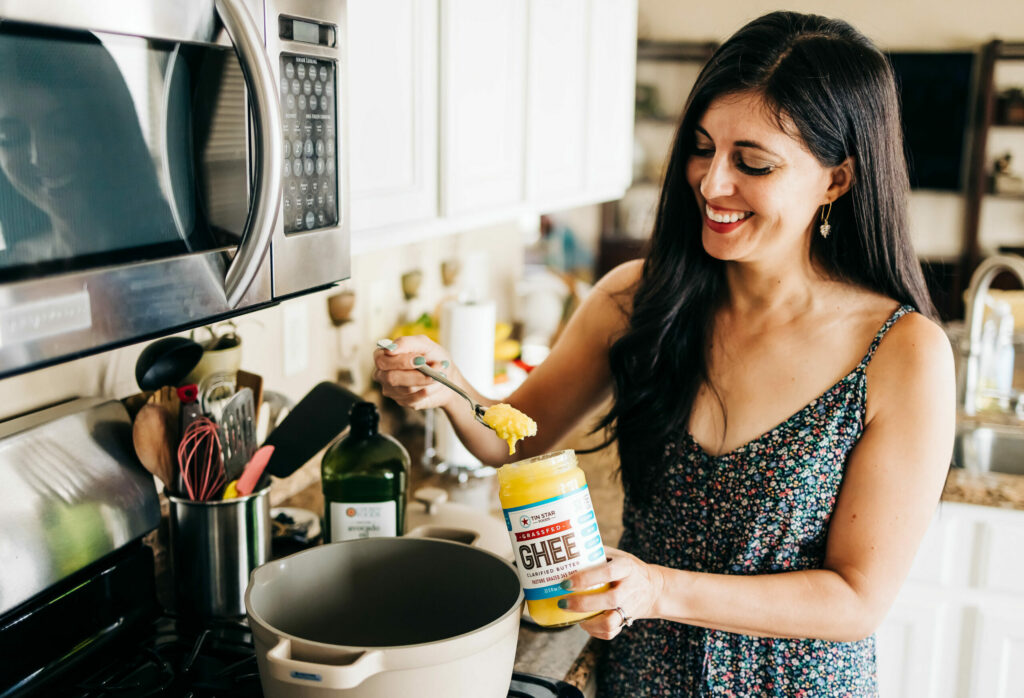
Everywhere you turn it seems that there are mixed opinions and research. What can you trust? For decades, Americans have been told to eat low-fat (this messaging has *finally* started to change), fear animal-based fats, and to choose “heart-healthy” vegetable oils. Unfortunately, Americans also become sicker each year and currently have the first generation where children are expected to die at younger ages than their parents. Metabolic issues continue to rise each year which can have detrimental impacts on our health.
So what do we do?
We must make the choice and be intentional by choosing primarily whole foods that came from the earth (through plant-based and animal-based foods). We know that there will always be life events, celebrations, dining out (lots of cheap oils used here). And other experiences that might present detours, but we must remember that we are in the driver’s seat. No one is forcing us to eat anything. And we can control how we nourish our body.
I like to use the rule of thumb that the product needs to have 5 ingredients or less, or in the case of sauces, marinades or crackers, I need to be able to pronounce all of the ingredients and/or I must be able to physically purchase the item in the store as if I intended to make it myself. PGPR? I have no idea how to buy that! BHA and BHT? Generally recognized as safe, but where do you buy that?
Oils are found in many processed and packaged foods. Which ones are best and which ones to ditch?
This is a handy list to help you sort through the pantry aisle and choose what’s best for you! Want to reduce inflammation? Start here!
Oils to choose and avoid:
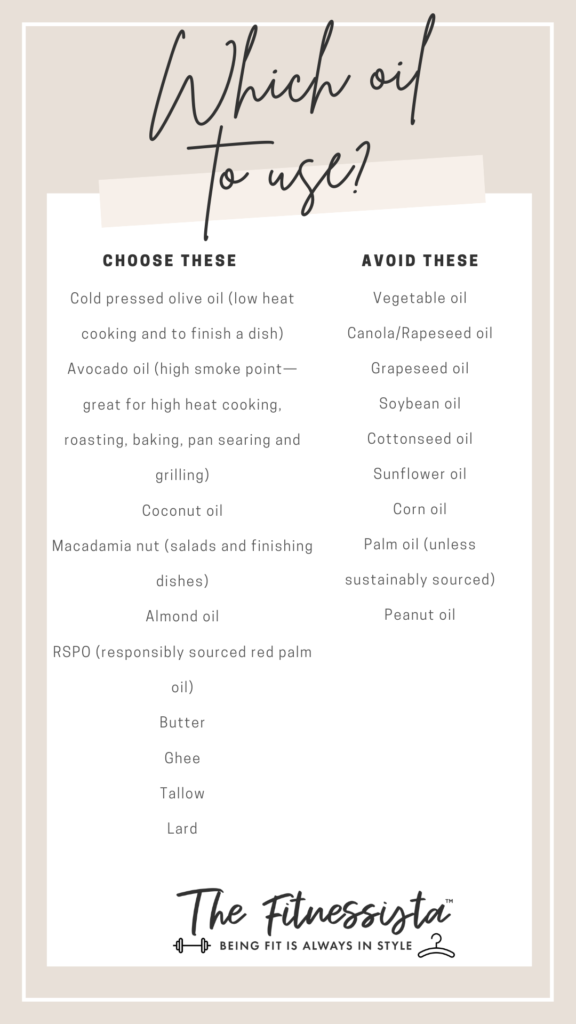
What makes some oils better than others?
It depends on what you’re cooking and the temperature that you’ll be using.
For high-heat cooking, like roasting, sautéing, stir-frys, and baking, I tend to go with a more neutral-tasting oil that has a high smoke point, like coconut oil, ghee, and avocado oil.
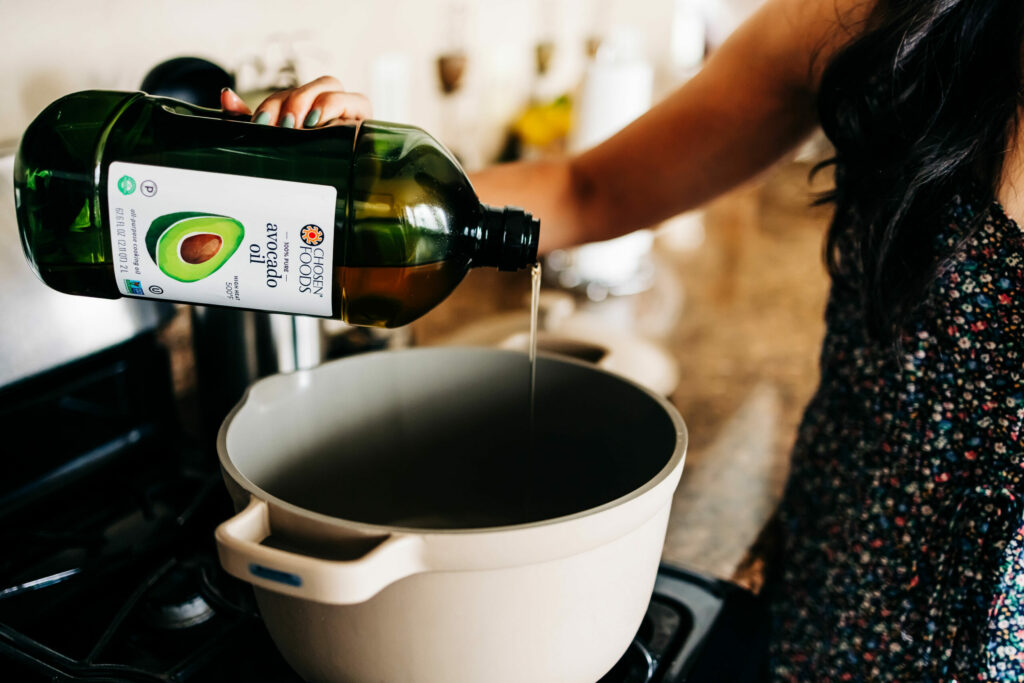
For medium-heat, I like butter! It has the best flavor. You just want to make sure that it melts gently and doesn’t turn brown.
For low to no heat, a drizzle of extra virgin olive oil is my go-to. It is not an oil that I use for cooking, but makes an ideal salad dressing or drizzle over roasting veggies, hummus, and bread dipper. 🙂
For the vegetable-based oils above, we tend to avoid these because of how they’re processed and inflammatory potential in the body. Many vegetable and seed oils are produced by using a chemical solvent (like canola oil), instead of simply crushing them (like olive oil!). Many vegetable and seed oils also tend to be higher in inflammatory omega 6’s. When we have a ratio of omega-3s to omega-6s that is similar (like 1:1), it doesn’t tend to be a problem. It’s when the omega 6’s take over (like it has in Western society with our constant availability of fast and fried foods, and foods containing trans fat), is when it could potentially cause inflammation-based issues. You can read more about potential implications here.
If you’re out to eat or at an event and vegetable/seed oils are unavoidable, you could pop an extra couple of Vitamin E capsules (or these) to combat the inflammatory omega-6s!
What’s your go-to oil when you’re cooking?
I order almost all of our cooking oils from Thrive Market – you can use this link for 40% off your first order!
xo
Gina
Source by fitnessista.com
